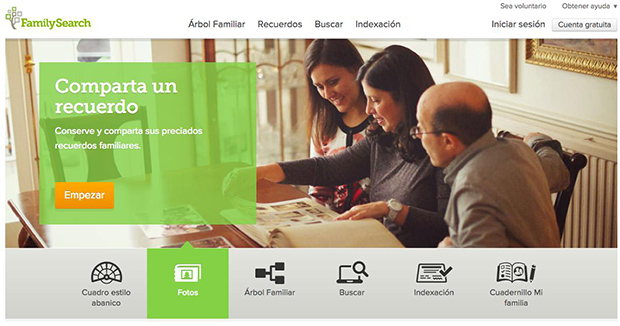How to Utilize Latin American Civil Records in Family History
Contributed By Jason Swensen, Church News staff writer
.jpg)
Many family names that will ultimately be indexed and taken to the temple will likely be found in civil records located in archives stretching from Mexico to Argentina, taught research specialist Aurturo Cuellar during the BYU Conference on Family History and Genealogy.
Article Highlights
- Millions of members either live in or can trace their ancestry to Latin America.
- Knowing one’s way around civil registration records is an invaluable skill in Latin American family history research.
Related Links
Millions of members either live in or can trace their ancestry to Latin America. So it’s essential that they know the ins and outs of genealogical record-keeping in that vast region.
Many family names that will ultimately be indexed and taken to the temple will likely be found in civil records located in archives stretching from Mexico to Argentina.
During the 2015 Conference on Family History and Genealogy on July 30, Arturo Cuellar, a research specialist at the Church’s Family History Library, conducted a course on utilizing civil registration records in Latin America. The class focused on developing key skills in searching through government records that can lead to the discovery of that missing ancestor.
For centuries following the Spanish and Portuguese colonization of Latin America, family history archives were the province of the Catholic Church. Birth, baptism, marriage, and death records were typically kept in the local parish.
Then in the 1800s, local municipalities began keeping their own records, said Brother Cuellar. Folks who refused to appear before a judge and report key events were subject to fines.
The first civil registration records in Latin America were kept in the Dominican Republic, starting in 1828. Most of the other nations of Central and South America followed suit in subsequent decades. Mexico, for example, began requiring their citizens to appear before local judges for civil registration in 1857.
(The one key exception is Bolivia, where civil registration did not begin until 1940, some two decades before the local establishment of The Church of Jesus Christ of Latter-day Saints.)
Brother Cuellar said knowing one’s way around civil registration records is an invaluable skill in Latin American family history research. Key data can often be gleaned from a single entry—including the names of witnesses, the presiding judge, godparents, and birth and death dates that can be used in future temple work.
So where to begin? First, locate the appropriate archive. Many Latin American civil registration records can be found online at FamilySearch.org. Then begin looking for individual names.
Always begin with what you know, said Brother Cuellar. Don’t start, say, with a search for a grandmother born centuries ago. Instead, locate ancestors from recent generations.
Work “from the known to the unknown”—don’t try to glean information from obscure records until all data is pulled from well-documented sources.
Knowing where an ancestor lived is vital to civil registration research. Brother Cuellar said many people in Latin America from past centuries lived in remote communities that might not have kept civil records. Their records can most likely be found in neighboring municipalities where they would have traveled to record vital events.
Online maps or gazetteers often prove helpful in locating the nearest record-keeping community.
Search for all family members that might be noted on, say, marriage or birth records (often listed as witnesses), and pay close attention to key information such as birthplaces and residences. Such data can offer hints to locate and study records found in other civil record archives.

The Spanish-language FamilySearch at https://familysearch.org/es is an invaluable resource for locating and indexing the names of ancestors from Latin America.
